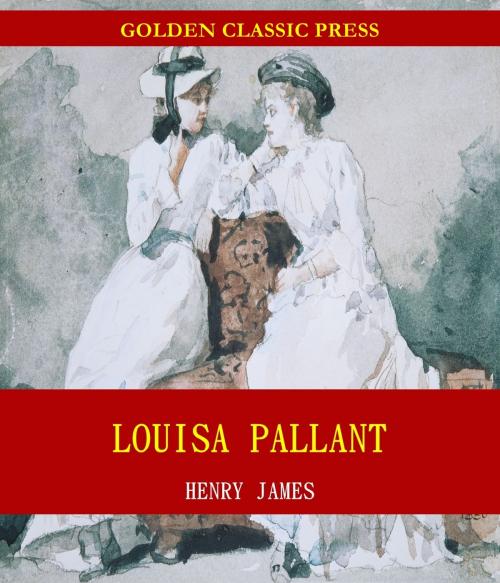| Author: | Henry James | ISBN: | 1230002962597 |
| Publisher: | GOLDEN CLASSIC PRESS | Publication: | December 1, 2018 |
| Imprint: | Language: | English |
| Author: | Henry James |
| ISBN: | 1230002962597 |
| Publisher: | GOLDEN CLASSIC PRESS |
| Publication: | December 1, 2018 |
| Imprint: | |
| Language: | English |
*** Original and Unabridged Content. Made available by GOLDEN CLASSIC PRESS***
Synopsis:
Louisa Pallant first appeared in magazine form in Harper's New Monthly Magazine for February 1888, alongside contributions by William Dean Howells and George Du Maurier. It was then reprinted in book form in England and America later the same year. Sometimes a work of literature may contains echoes or references to another work by a different author (and the same may be true for works of art or music). They may be placed there deliberately or unintentionally. And these references may (or may not) throw extra light onto either the earlier or the later work. Here there is a clear echo of Great Expectations (1860-61). Charles Dickens's character Miss Havisham has been jilted at the altar and has been eaten up with bitterness ever since. As a form of revenge upon men, she trains her young ward Estella to be deliberately stony hearted. When the young hero of the novel Pip falls in love with Estella, she encourages him, then takes delight in rejecting and humiliating him. In Louisa Pallant, the roles are similar, although the outcome is different. Louisa has been 'engaged' to the narrator, but has rejected him in favour of Henry Pallant. We have the impression that she chose a richer man, but her marriage has not been a success, and her husband has both died and left her without very much money. Louisa has produced a daughter who is cold, clever, calculating, and socially ambitious. Louisa herself admits that the girl is the embodiment of her own weaknesses and flaws - but much magnified. And on the balance of events in the tale, Linda gets what she wants - a rich husband.
*** Original and Unabridged Content. Made available by GOLDEN CLASSIC PRESS***
Synopsis:
Louisa Pallant first appeared in magazine form in Harper's New Monthly Magazine for February 1888, alongside contributions by William Dean Howells and George Du Maurier. It was then reprinted in book form in England and America later the same year. Sometimes a work of literature may contains echoes or references to another work by a different author (and the same may be true for works of art or music). They may be placed there deliberately or unintentionally. And these references may (or may not) throw extra light onto either the earlier or the later work. Here there is a clear echo of Great Expectations (1860-61). Charles Dickens's character Miss Havisham has been jilted at the altar and has been eaten up with bitterness ever since. As a form of revenge upon men, she trains her young ward Estella to be deliberately stony hearted. When the young hero of the novel Pip falls in love with Estella, she encourages him, then takes delight in rejecting and humiliating him. In Louisa Pallant, the roles are similar, although the outcome is different. Louisa has been 'engaged' to the narrator, but has rejected him in favour of Henry Pallant. We have the impression that she chose a richer man, but her marriage has not been a success, and her husband has both died and left her without very much money. Louisa has produced a daughter who is cold, clever, calculating, and socially ambitious. Louisa herself admits that the girl is the embodiment of her own weaknesses and flaws - but much magnified. And on the balance of events in the tale, Linda gets what she wants - a rich husband.















